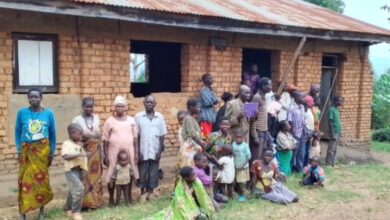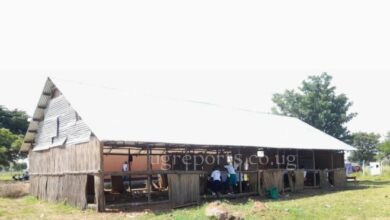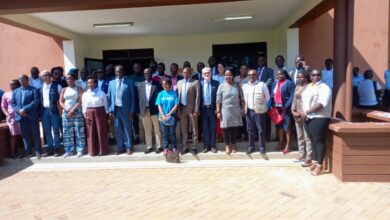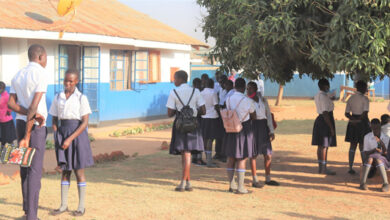Masindi schools grapple with congested classrooms
In some schools, learners are sitting on the floor while one desk is shared by over six learners.

Masindi: Government-aided primary schools in Masindi district are grappling with an overwhelming number of learners, leading to congestion in classrooms.
This followed the reopening of the schools after two years of COVID-induced lockdown that saw many parents withdraw their children from the private schools and take them to government-aided ones.
In some schools, learners are sitting on the floor while one desk is shared by over six learners.
In addition, some schools have inadequate classrooms, prompting some schools to construct temporary structures to accommodate the extra learners.
St. Mary’s Kyatiri Primary School in Kyatiri Town Council has 1,500 learners with 22 teachers; Kasenene Primary School in Nyantonzi Sub County has 1,211 learners and 9 teachers; and Kimanya Upper Primary School, also in the same sub-county, has 707 learners and 9 teachers of the required 13.
Nyantonzi Primary School in Nyantonzi Sub County has an enrolment of 816 learners and 9 teachers of the required 15, while Kinyara Primary School in Kabango town council has over 2,000 learners, among other schools.
At St. Mary’s Kyatiri Primary School, a section of primary two-class learners sits on the floor while over six learners share a desk meant for three learners. In addition, teachers are sharing the same latrine with learners.
The teachers at the school who spoke to ugreports.co.ug on condition of anonymity revealed that teaching learners in congested classrooms hampers their learning and their performance.
‘’We don’t have enough desks; this forced some learners to sit on the floor. The mat we had got worn out, so they had nothing to do apart from sitting on the floor,’’ they said.
The teachers added that they are experiencing the challenge of monitoring the learners in the classrooms since they don’t have adequate space to do so.
John Kisarach, the councillor representing Kyatiri Town Council to Masindi district council, acknowledged the challenge of high enrolment at Kyatiri Primary School that he said is alarming and therefore needs urgent intervention by the district leadership through constructing more classroom blocks and decongesting the available ones.
‘’Some classrooms are not cemented yet learners are sitting on the floor; there is a need to construct more classroom blocks if we are to improve the academic performance of such schools,’’ Kisarach said.
Boniface Opio, the head teacher of Kasenene Primary School in Nyantonzi Sub County, said that though the standard pupil-teacher ratio is one to 5, this is not the case at his school.
Opio revealed that the teachers are attending to more than 100 learners in a classroom meant for not more than 55 learners, with some standing while others don’t even have anywhere to stand or sit. He added that due to the congestion, they have been forced to construct temporary structures, but they lack teachers to attend to the learners in the several classrooms.
Monica Kiiza, the Masindi district inspector of schools, acknowledged the challenge of congestion in classrooms in most government-aided schools in the district, which she said is hampering effective teaching and learning.
Cosmas Byaruhanga, the Masindi district LCV chairperson, said the district has been building two to four classrooms every financial year in order to address the challenge of congested classrooms in the district, but still, they are not yet enough.
Byaruhanga revealed that they engaged the ministry of education and sports, which promised 800 million shillings in the next financial year, which they hope to use to construct about 20 classroom blocks, which will help to decongest some classrooms in the district.
He further revealed that the district plans to recruit more teachers when the district service commission resumes work to address the challenges of inadequate teachers.
Kenneth Kiiza Nyendwoha, the Bujenje Constituency Member of Parliament in Masindi district, disclosed that most schools in the country are facing the challenge of congested classrooms, which he attributes to limited infrastructure.
Nyendwoha revealed that the government is trying to engage the World Bank and African Development Bank to secure funds to construct new schools, renovate dilapidated structures, and code more community schools in order to reduce congestion in the existing schools.
Do you have an advertisement or article you want to publish? Mail us at theugreports@gmail.com or WhatsApp +256757022363.






